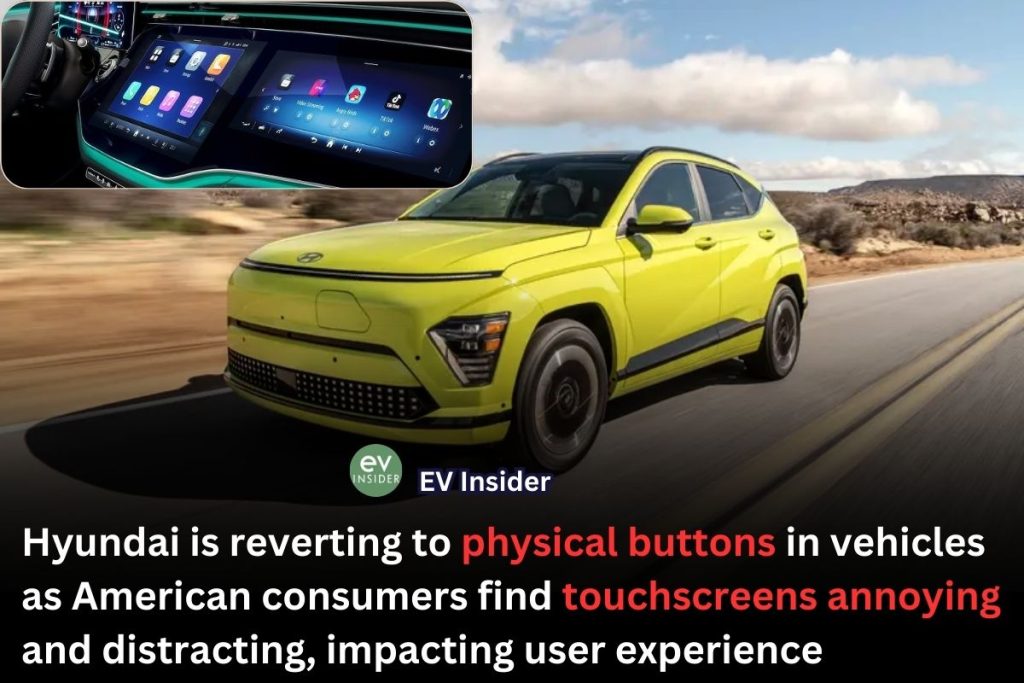Hyundai Reverting Back to Physical Buttons in Vehicles as American Consumers Find Touchscreens Annoying and Distracting
Hyundai is making a significant shift in its design philosophy by reintroducing physical buttons in its vehicles, a move that reflects growing consumer dissatisfaction with touchscreen controls. This decision comes after the automaker acknowledged that many drivers find touchscreens to be frustrating and distracting, particularly when driving.

Background on the Shift
In recent years, the automotive industry has seen a surge in the adoption of touchscreen interfaces, largely inspired by the success of Tesla’s minimalist approach. However, this trend has not resonated well with all consumers. Hyundai’s U.S. design chief revealed that American drivers have expressed their dislike for touchscreen controls, particularly for essential functions like climate control and audio settings.
Hyundai’s initial strategy aimed to create a sleek, modern aesthetic by minimizing physical controls. However, focus group feedback indicated that users felt stressed and annoyed when attempting to make adjustments while driving. The tactile feedback of physical buttons allows drivers to maintain focus on the road, enhancing safety and convenience.
Reasons for the Change
Consumer Preferences
- Safety Concerns: Studies indicate that interacting with touchscreens can distract drivers for longer periods compared to using physical buttons.
- Ease of Use: Physical buttons allow for quicker adjustments without requiring visual confirmation, which is crucial during driving.
- User Experience: Many drivers find touchscreens cumbersome for basic tasks like adjusting temperature or changing radio stations, which can be done more intuitively with buttons.
Market Trends
- Industry Response: Hyundai’s decision may influence other manufacturers who have heavily invested in touchscreen technology to reconsider their designs.
- Future Considerations: As vehicles become more automated with advanced driver-assistance technologies, consumer attitudes towards touchscreens might evolve. Hyundai anticipates that as self-driving features become more prevalent, drivers may become more comfortable with touchscreen interfaces.
Upcoming Models
Hyundai plans to incorporate these changes in its upcoming electric vehicle models. The recently updated Ioniq 5 is an example where this philosophy has already been implemented, featuring a blend of touchscreens and physical buttons.
Comparison of Control Types
| Feature | Touchscreen Controls | Physical Buttons |
|---|---|---|
| User Interaction | Requires visual attention | Can be operated by feel |
| Response Time | Delayed due to screen navigation | Immediate tactile feedback |
| Driver Distraction | High risk due to prolonged focus | Lower risk; allows for quick adjustments |
| Design Flexibility | Sleek and modern aesthetics | More traditional but functional |
| User Preference | Mixed reviews; many find it annoying | Generally preferred for essential tasks |
Hyundai’s reintroduction of physical buttons signifies a pivotal moment in automotive design, prioritizing driver safety and user satisfaction over purely aesthetic considerations. As the market continues to evolve, this decision may set a precedent for how manufacturers balance technology with practicality in vehicle interiors. By listening to consumer feedback and adapting accordingly, Hyundai aims to enhance the overall driving experience while addressing the frustrations associated with touchscreen controls.